The Yellow-Collared Lovebird (Agapornis personatus) is a captivating and affectionate parrot species that has captured the hearts of bird enthusiasts worldwide. Known for its vibrant plumage, playful nature, and strong bond-forming abilities, this small parrot brings joy and companionship to those who admire its beauty. In this article, we will explore the delightful world of the Yellow-Collared Lovebird, uncovering its characteristics, habitat, behavior, and the special place it holds as a beloved pet.
Yellow-Collared Lovebird images

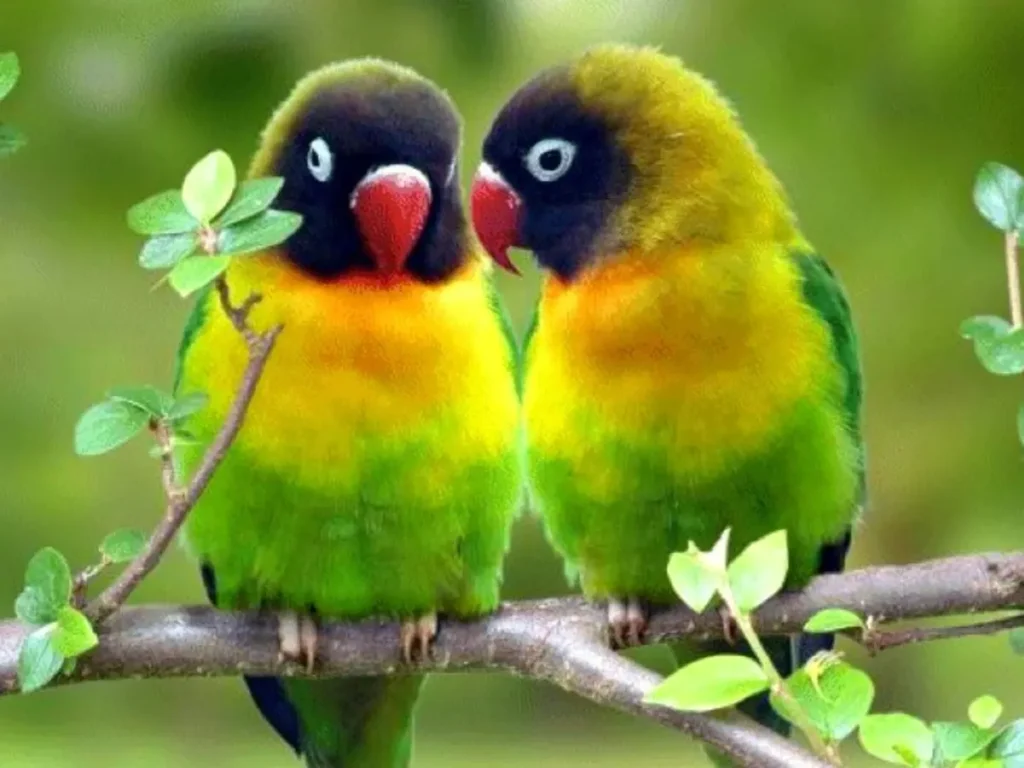




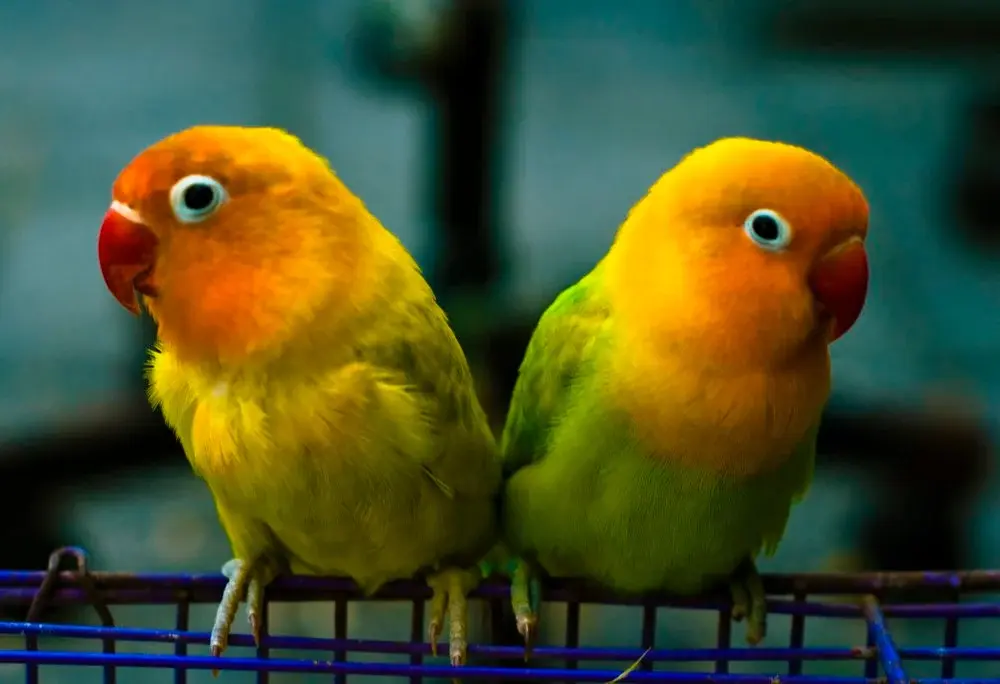
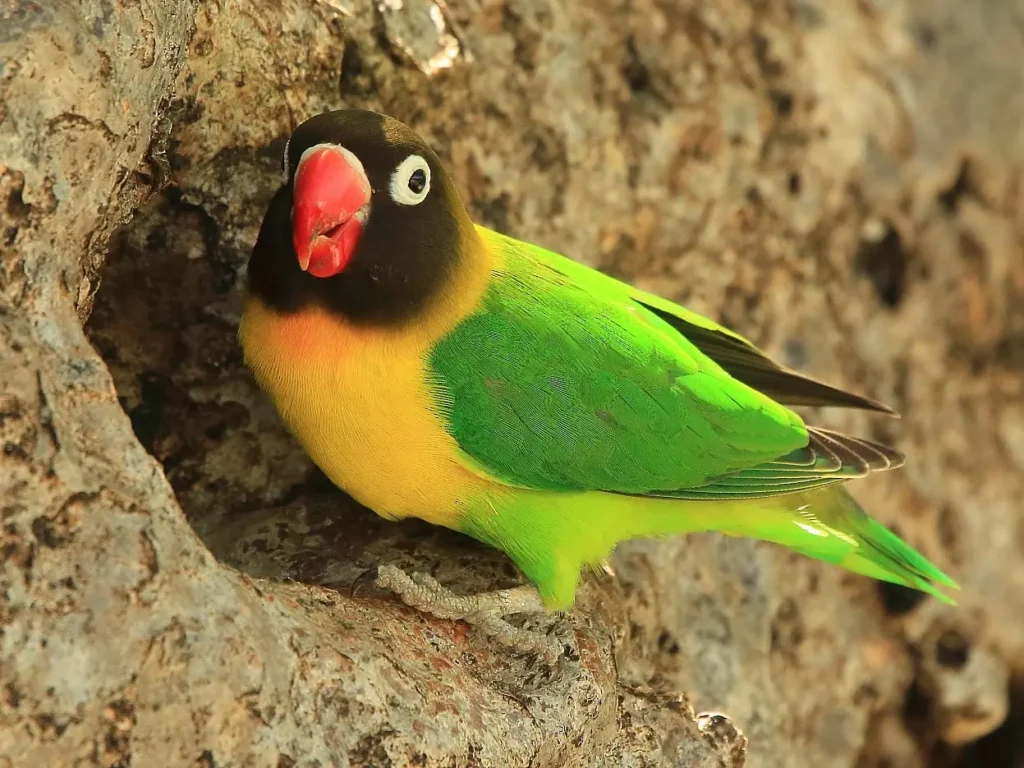
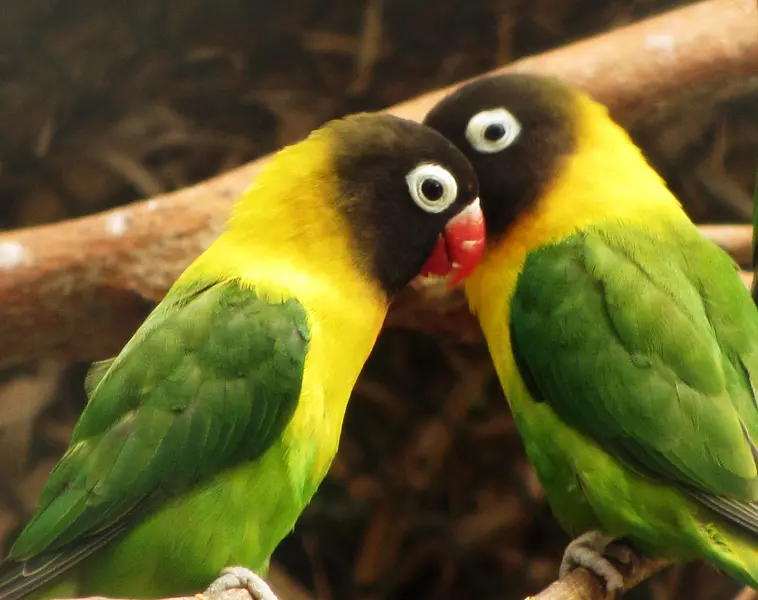
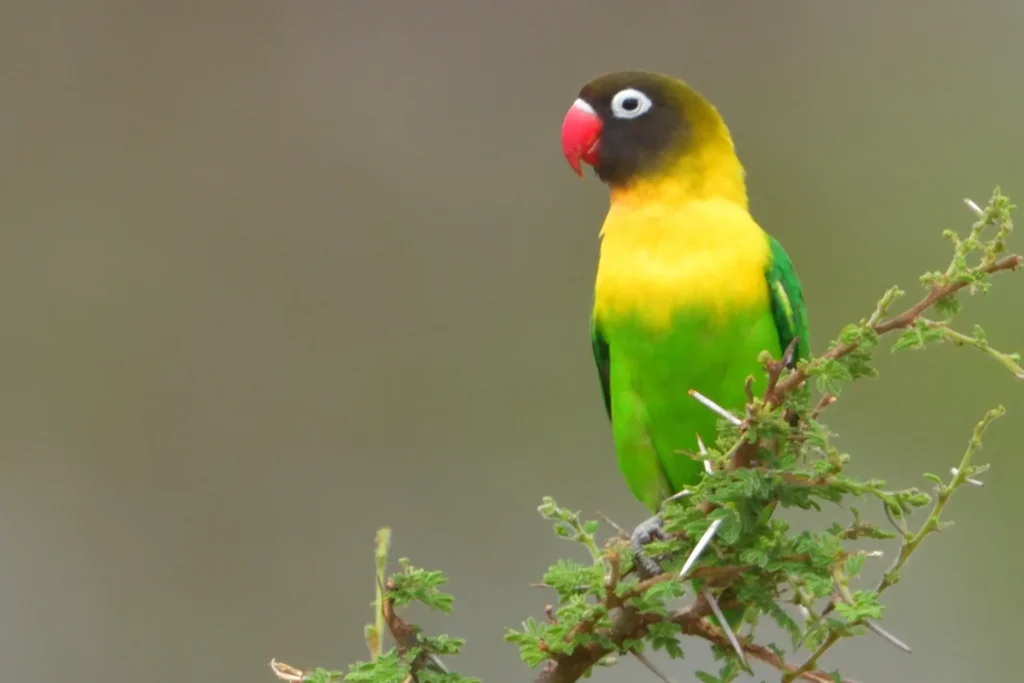
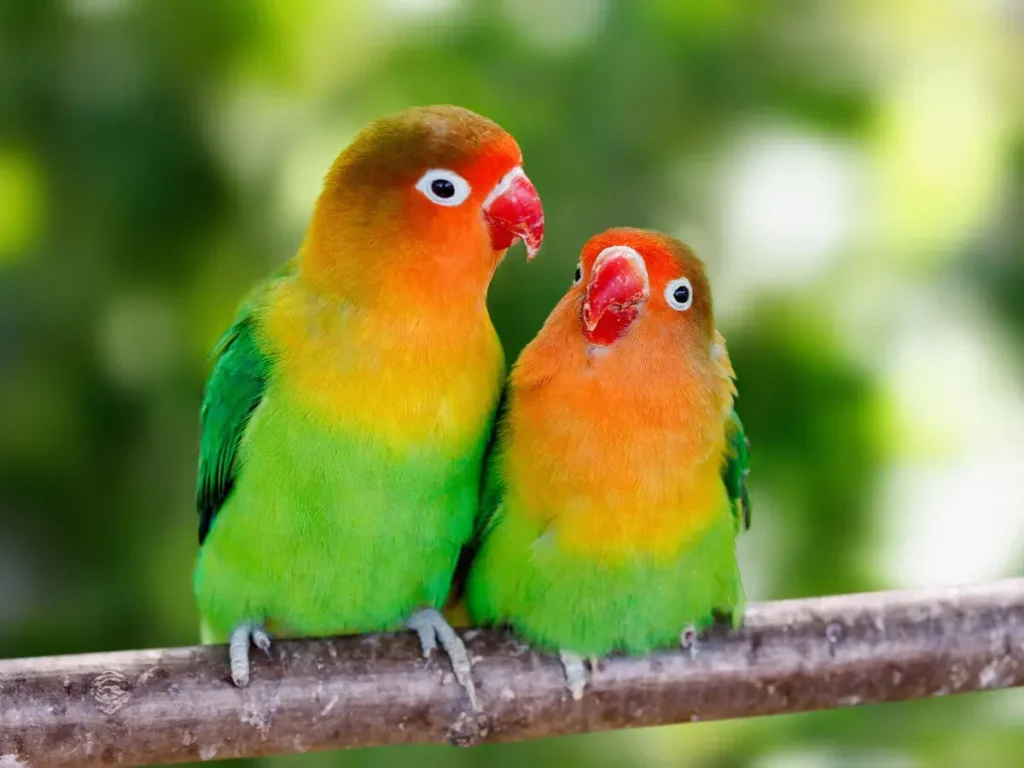

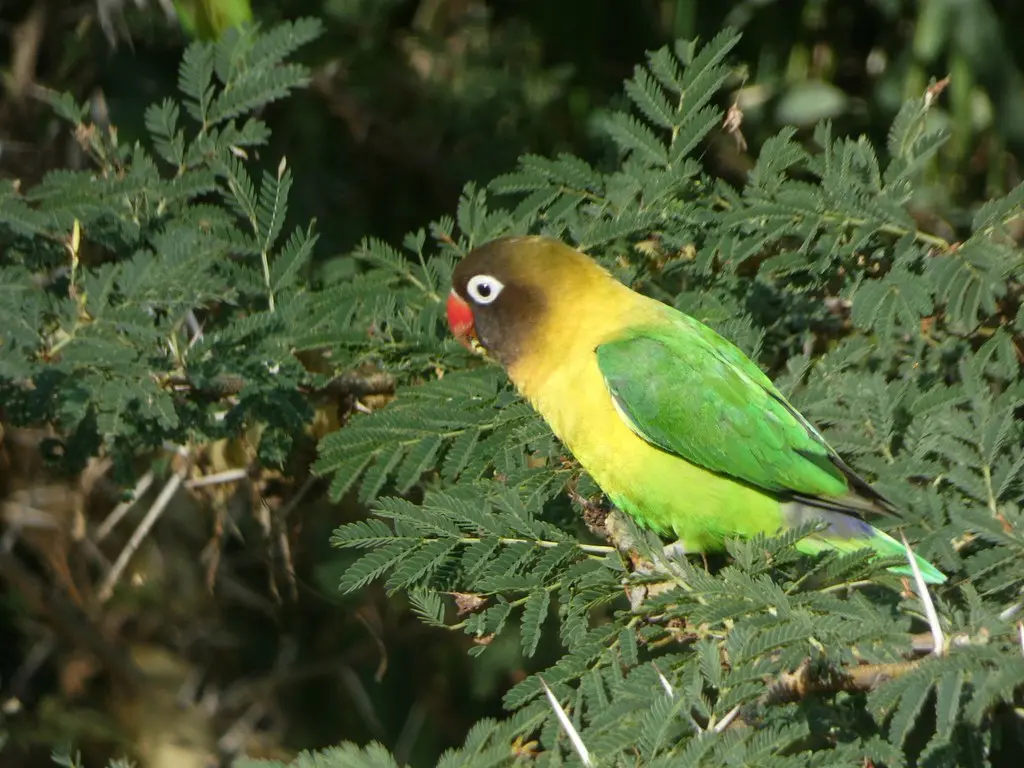

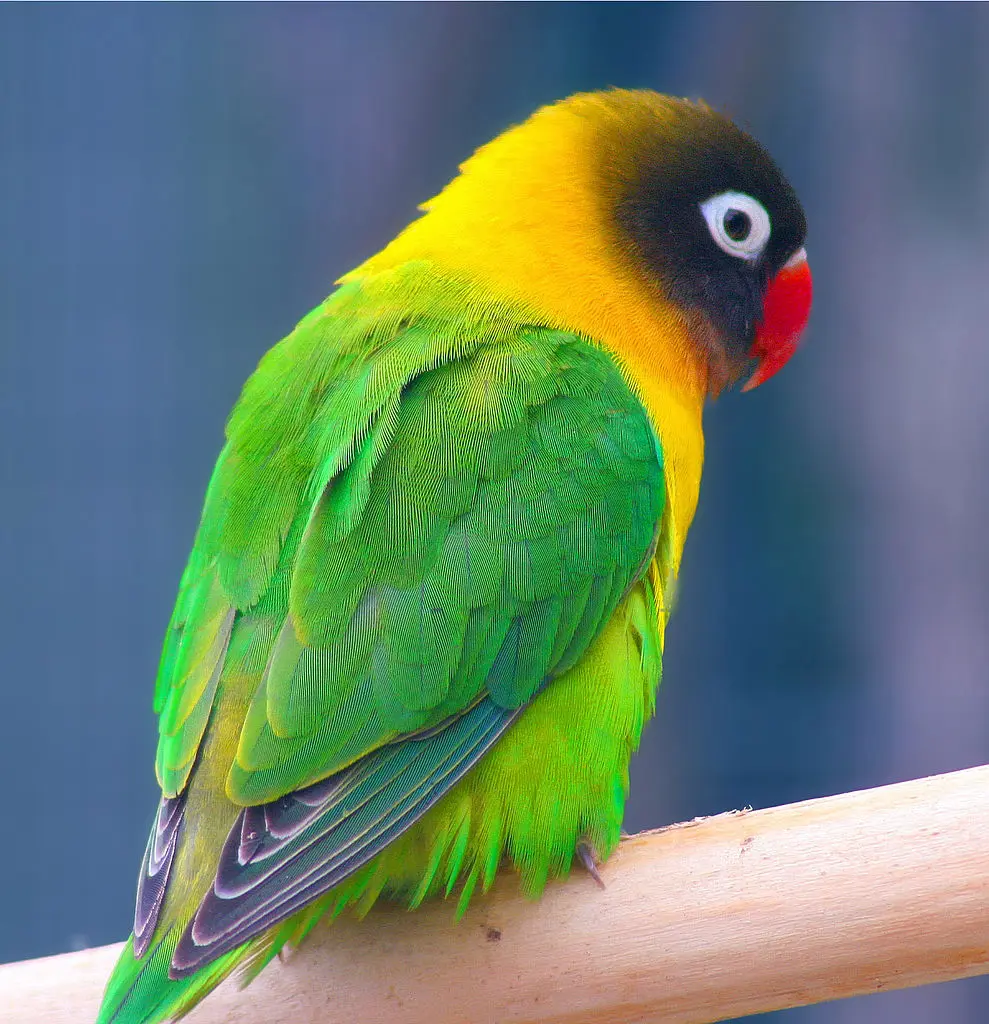
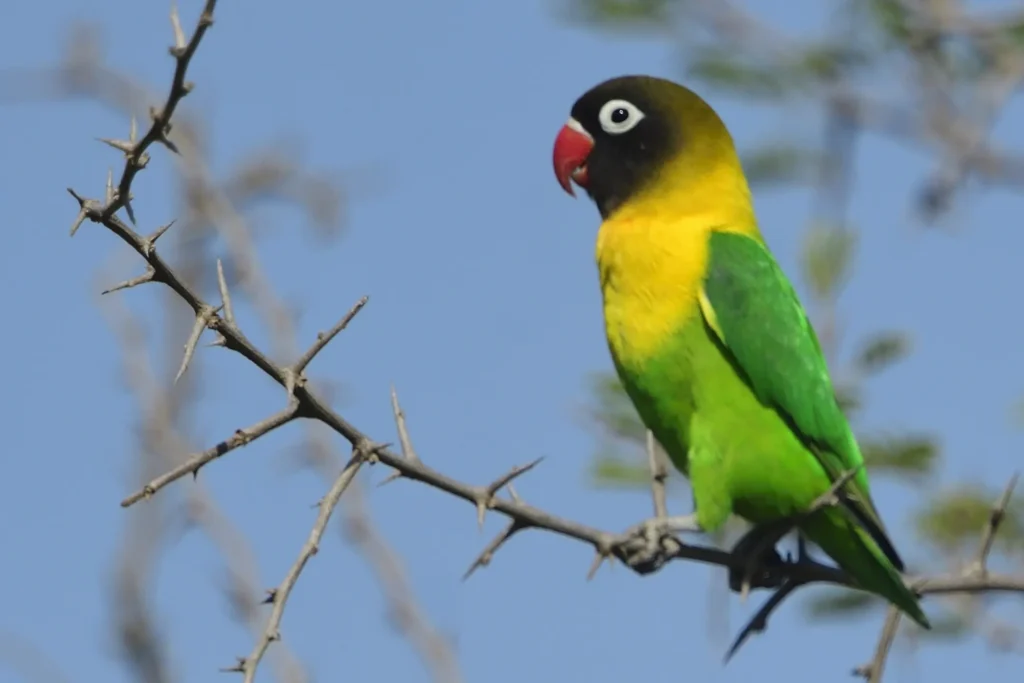

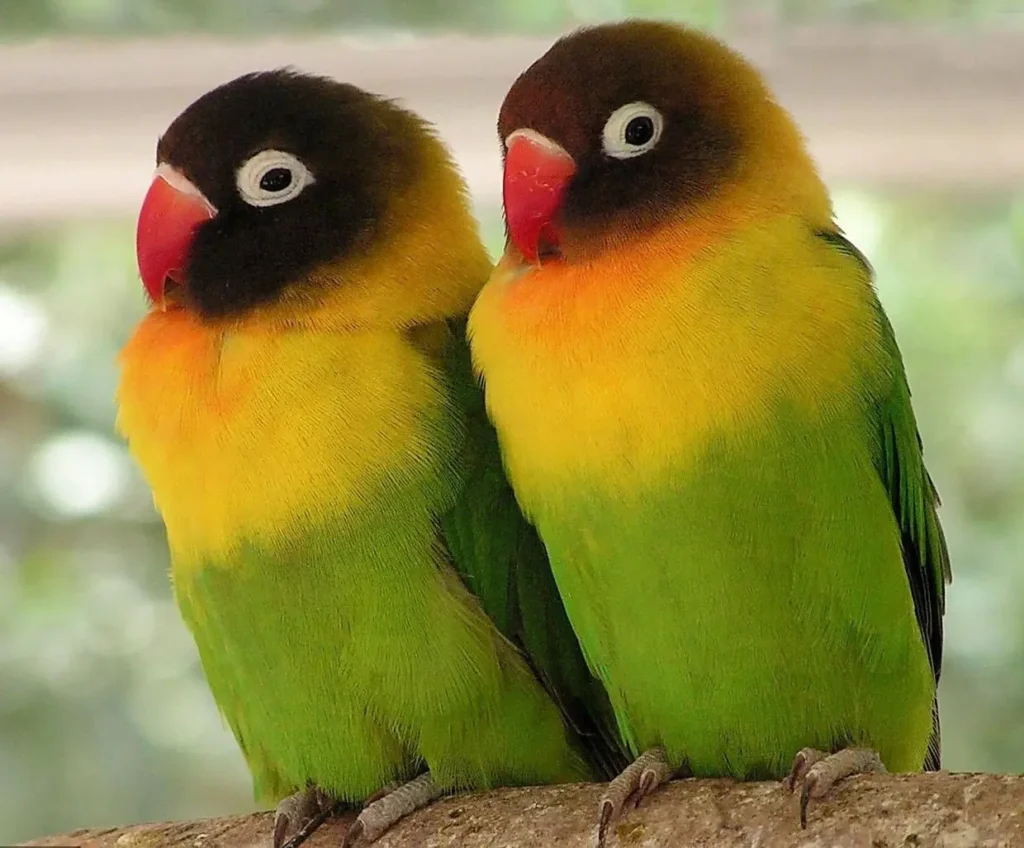
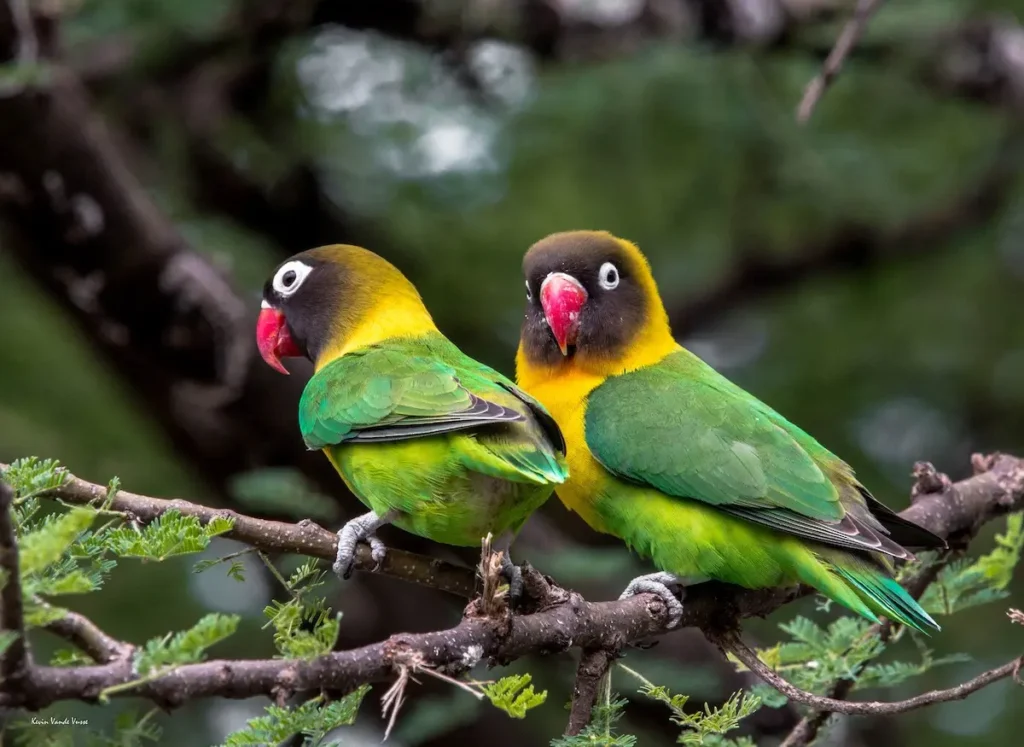
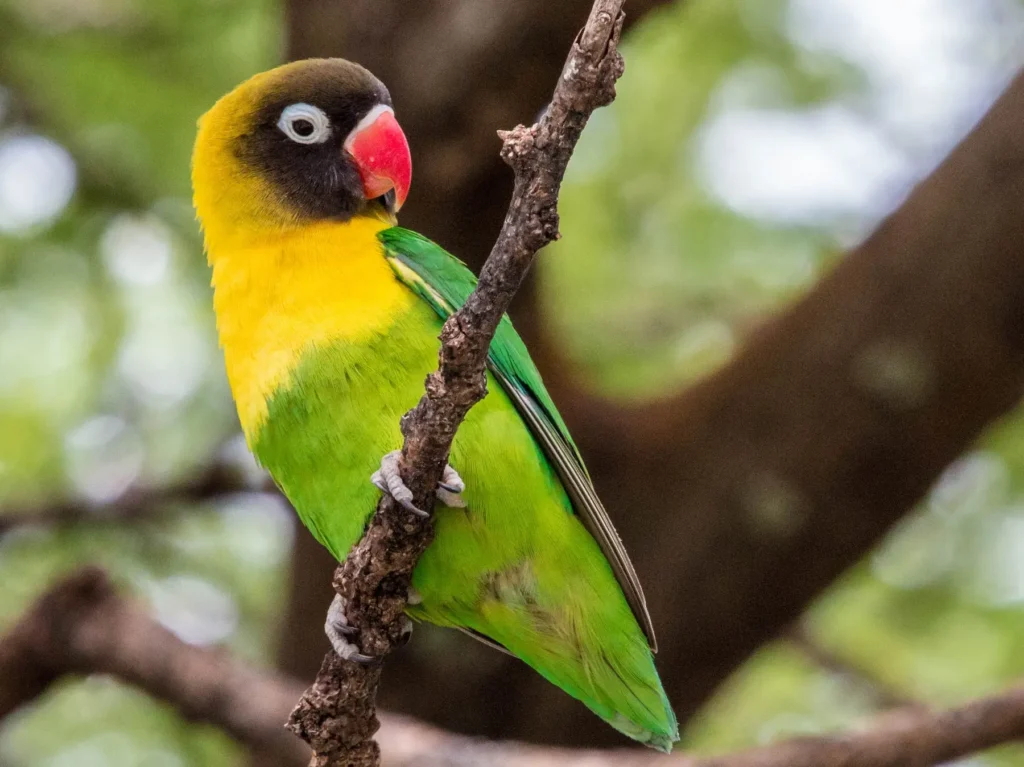
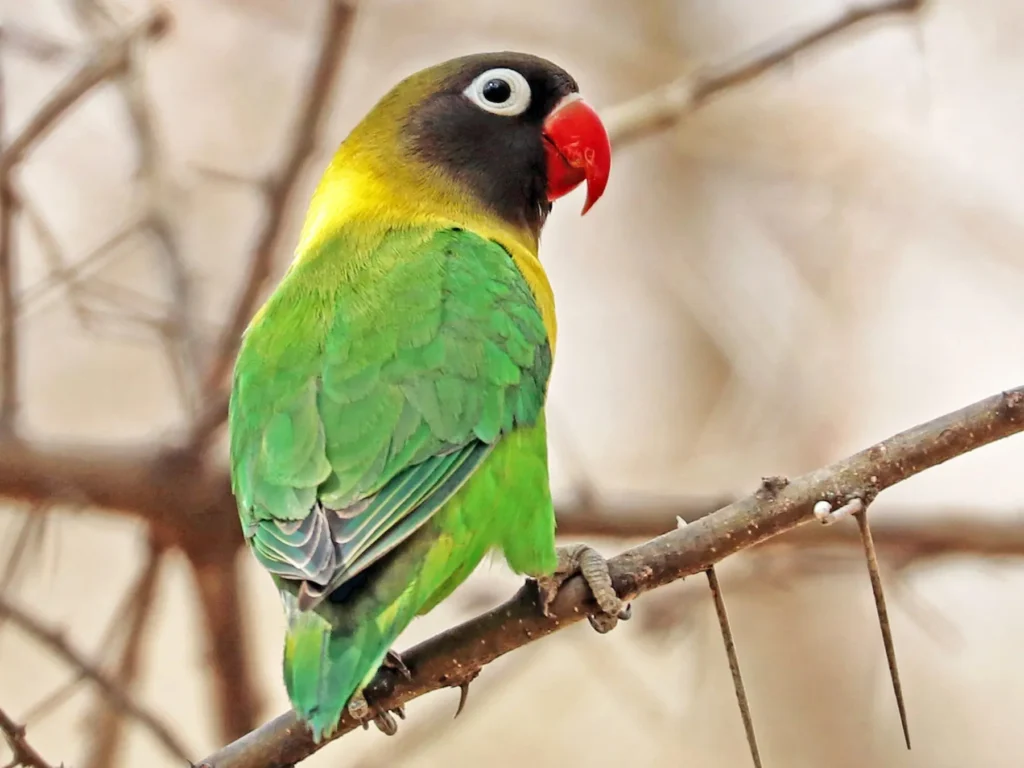
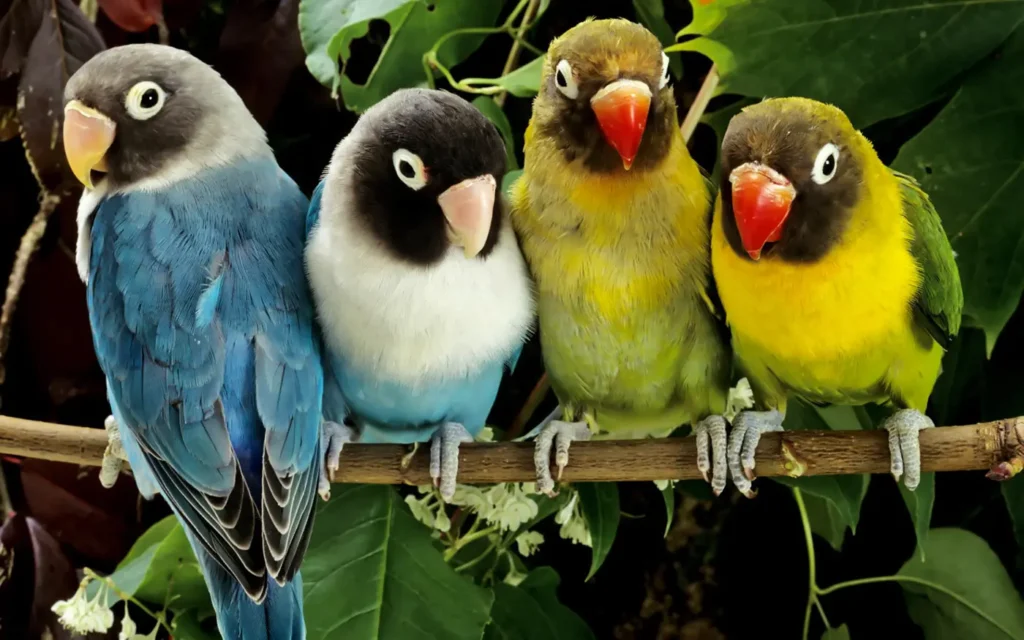
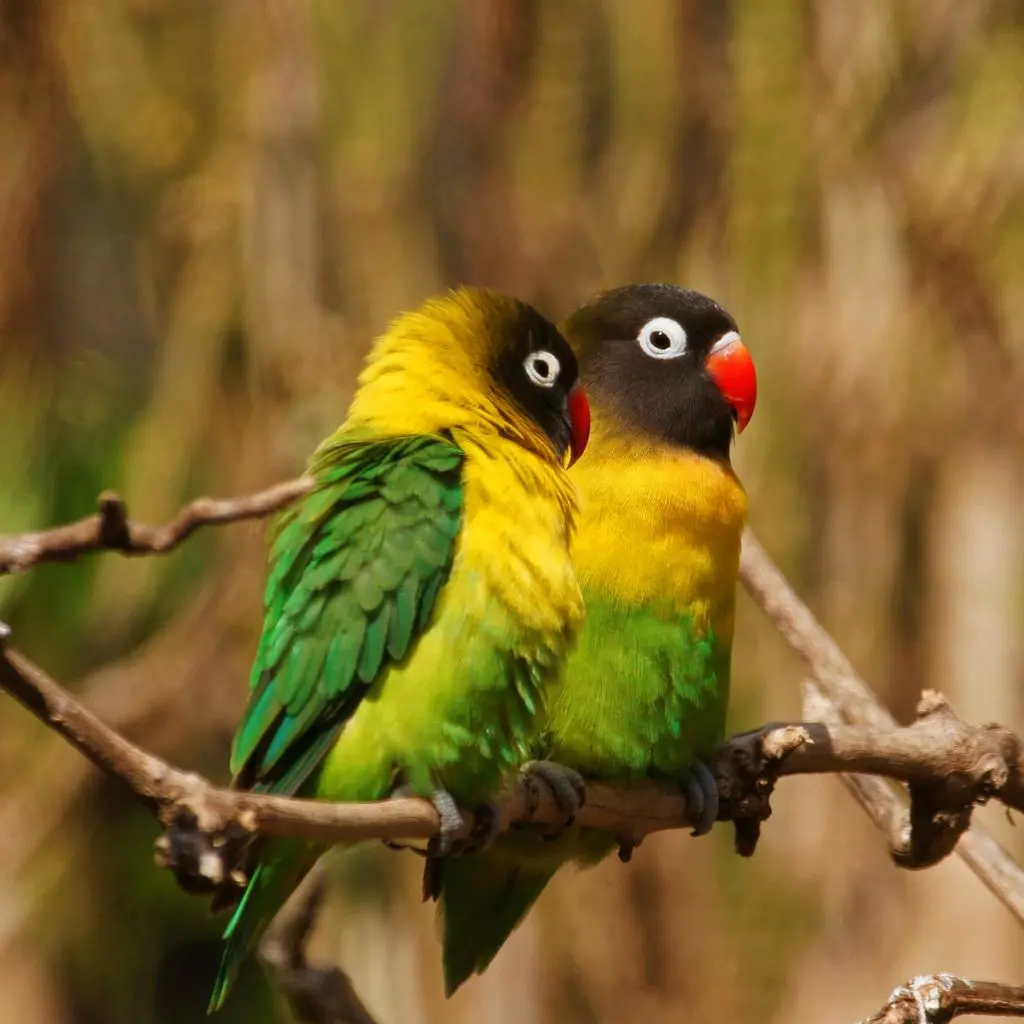

Appearance and Distinctive Features
The Yellow-Collared Lovebird is a small parrot measuring about 13 centimeters (5 inches) in length. It displays a stunning combination of bright colors, with a predominantly green body and a yellow collar encircling its neck. Its wings feature a blend of green, blue, and black feathers, and its tail is long and tapered. The beak is short and powerful, allowing the lovebird to crack open seeds and fruits with ease.
Habitat and Distribution
Yellow-Collared Lovebirds are native to the woodlands and savannas of northeastern Tanzania and parts of Kenya. In the wild, they thrive in semi-arid areas with access to water sources and suitable nesting sites, such as tree cavities or abandoned nests of other birds. They are also commonly found in agricultural areas and urban landscapes, adapting well to human-altered environments.
Behavior and Social Nature
These lovebirds are highly social and form strong bonds with their mates and flock members. They are often seen in pairs or small groups, engaging in playful displays and affectionate behaviors. Their name, “lovebird,” is derived from their tendency to sit closely and preen each other, reinforcing their social bonds.
Yellow-Collared Lovebirds are known for their energetic and lively personalities. They are active throughout the day, hopping, climbing, and exploring their surroundings with agility and curiosity. They are vocal birds, emitting a variety of chirps, whistles, and squawks to communicate with their flock members.
Feeding Habits
In their natural habitat, Yellow-Collared Lovebirds primarily feed on a diet consisting of various seeds, berries, fruits, and blossoms. They have strong beaks designed to crack open seeds and extract the nutritious contents. In captivity, a balanced diet for pet lovebirds includes a mix of high-quality pellets, fresh fruits, vegetables, and occasional treats like nuts and sprouted seeds.
Pet Ownership and Care
Yellow-Collared Lovebirds are popular as pets due to their small size, playful nature, and colorful plumage. When considering a lovebird as a pet, it is essential to provide them with a suitable cage that allows for adequate space to move, stretch their wings, and play. They also benefit from mental stimulation, such as toys, puzzles, and perches of different textures.
Lovebirds are social birds and require daily interaction and companionship. They can form strong bonds with their owners and enjoy gentle handling and affectionate interaction. Providing a balanced diet, fresh water, regular exercise, and a safe environment are crucial for their well-being.
Conservation Status and Outlook
The Yellow-Collared Lovebird is classified as a species of “Least Concern” on the IUCN Red List, indicating a stable population and a relatively secure future. However, habitat loss and fragmentation pose threats to their wild populations, emphasizing the importance of conserving their natural habitat and protecting their breeding sites.
The Yellow-Collared Lovebird, with its vivid plumage, playful demeanor, and affectionate nature, brings a vibrant spark of joy to avian enthusiasts and pet owners alike. Its social bonds and lively antics serve as a reminder of the beauty and wonder of the avian world. Whether observed in the wild or cherished as a companion, the Yellow-Collared Lovebird continues to enchant and captivate with its delightful presence.








